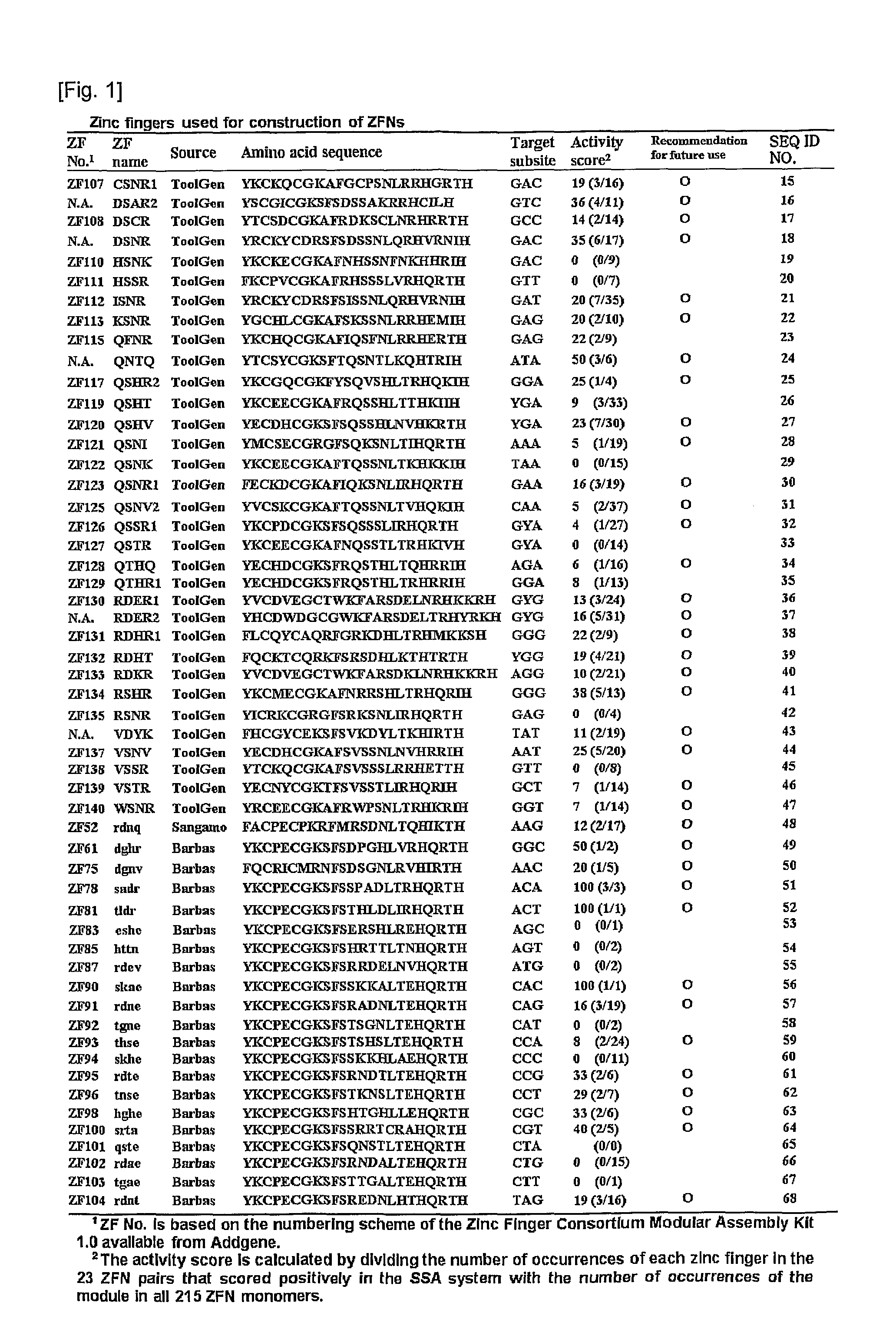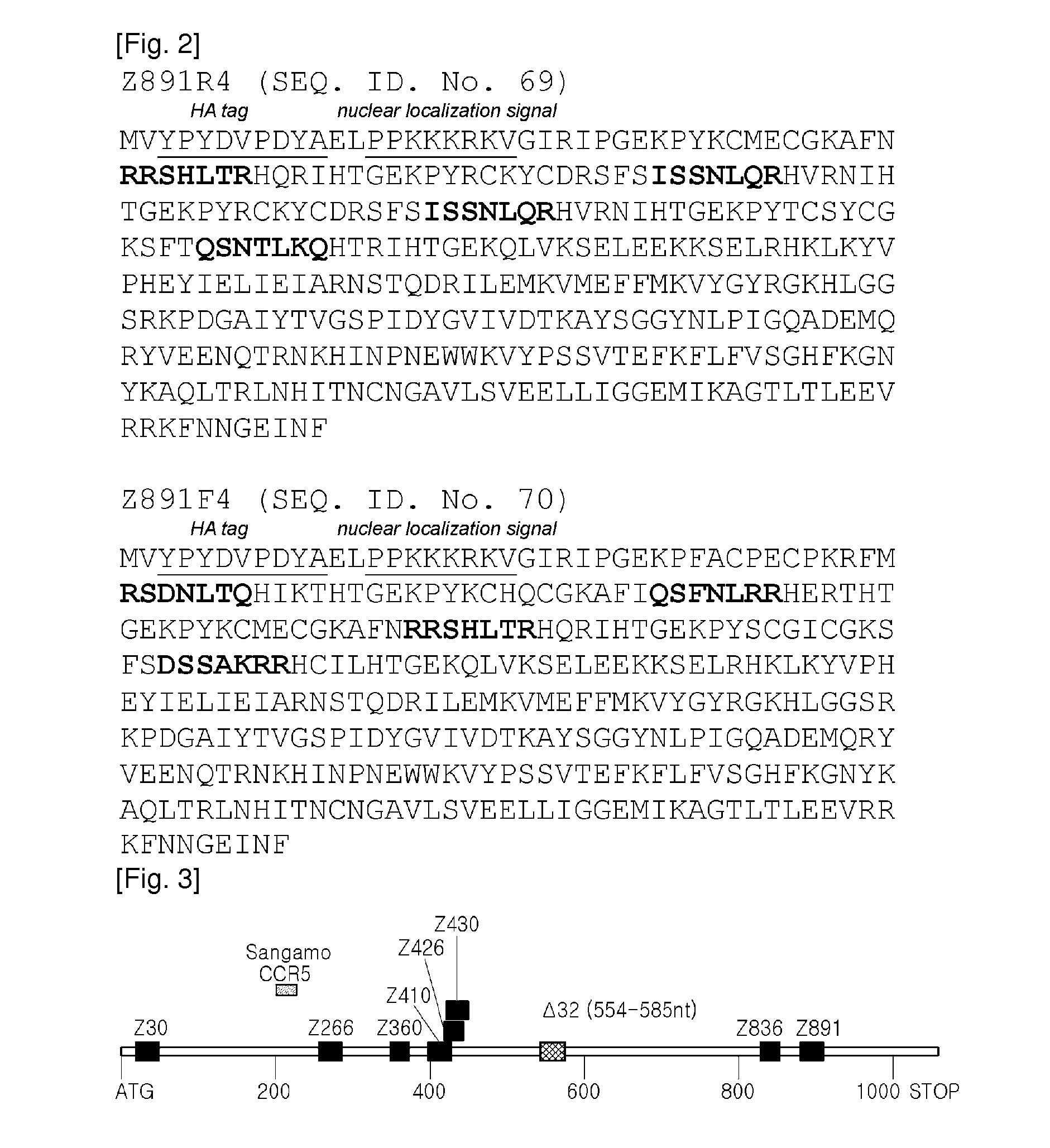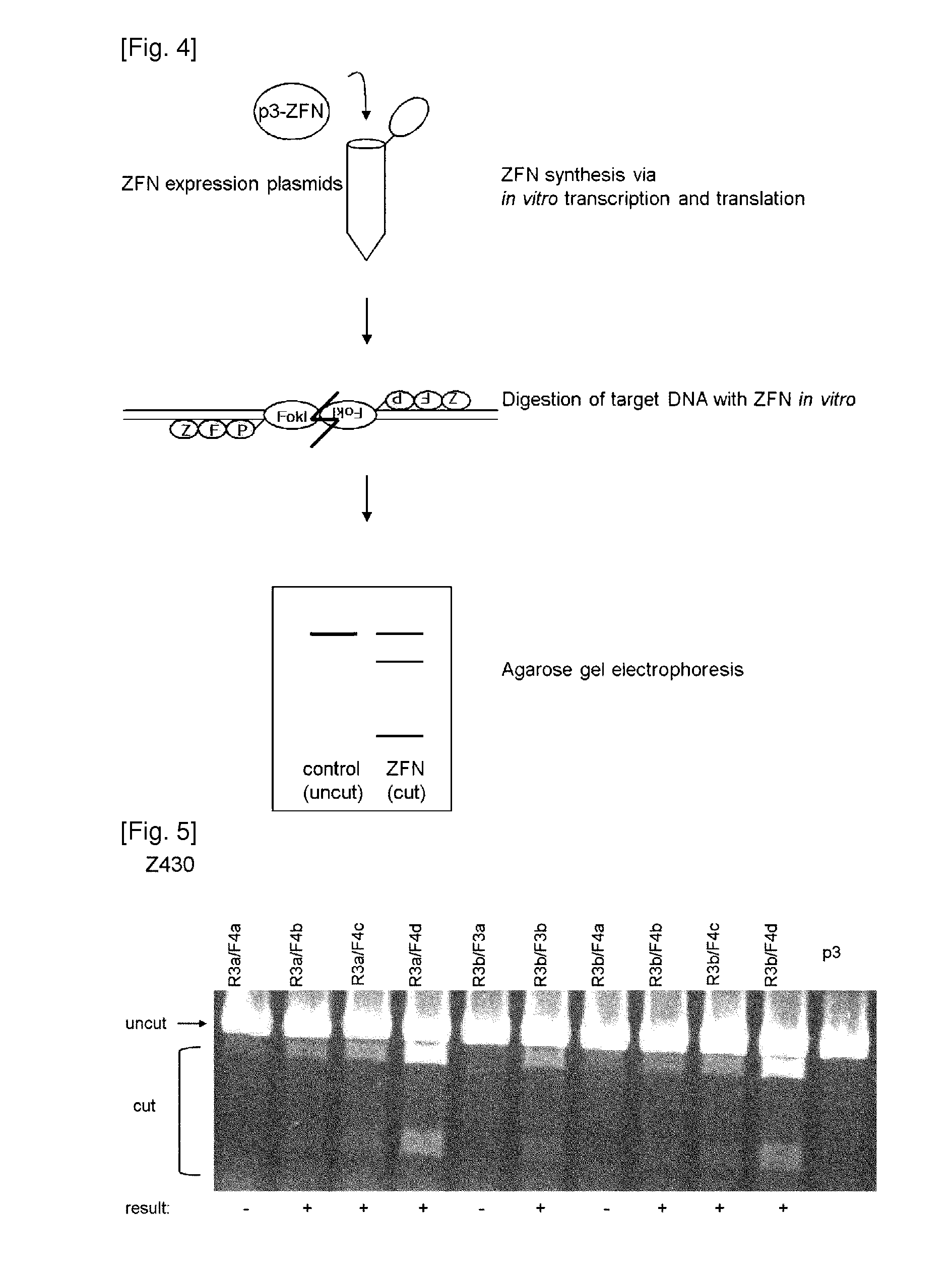Novel Zinc Finger Nuclease and Uses Thereof
a zinc finger nuclease and nucleus technology, applied in the field of new zinc finger nuclease, can solve the problems of high labor-intensive and time-consuming selection-based methods, broken dna end insertion or deletion of base pairs, and high labor-intensive and time-consuming dna end insertion and deletion, and achieve the effect of rapid production
- Summary
- Abstract
- Description
- Claims
- Application Information
AI Technical Summary
Benefits of technology
Problems solved by technology
Method used
Image
Examples
example 1
ZFN Design and Construction of ZFN-Containing Plasmid
[0093]DNA segments that encoded 3- or 4-finger arrays were assembled as described in “Human zinc fingers as building blocks in the construction of artificial transcription factor” (Bae, K. H. et al. Nat Biotechnol 21, 275-280 (2003)). Of the 3- or 4-finger arrays, 54 zinc finger modules (hereinbelow, referred to as ZF module) with diverse DNA-binding specificities were chosen. The selected ZF modules and amino acid sequences thereof are shown in FIGS. 1 and 2. Of these 54 ZF modules, 31 were derived from DNA sequences in the human genome and 2 were from those in the Drosophila genome (FIG. 1). The ZF modules derived from DNA sequences in the human and Drosophila genomes are termed ToolGen modules, for the sake of convenience. The remaining 21 ZF modules were either selected from libraries of ZF variants using phage display (Barbas modules) or produced by site-directed mutagenesis (Sangamo modules).
[0094]Next, for the design of mul...
example 2
In vitro and in vivo Assays of ZFN Activity
[0096]2-1. In vitro Digestion Assay
[0097]First, ZFNs were prepared using an in vitro transcription and translation (IVTT) system and incubated with a DNA segment that contained the CCR5 coding sequence to assess their DNA restriction activities in vitro. Specifically, the designed ZFNs in Example 1 were transcribed and translated in vitro using the TnT-Quick coupled transcription / translation system (Promega) as described by the manufacturer (in vitro transcription and translation; IVTT). Briefly, plasmids (0.5 μl each) that encoded ZFNs were added to TnT Quick master mix (20 μl) and 1 mM methionine (0.5 μl), and incubated for 90 min at 30° C. The target plasmid containing the CCR5 coding sequence was first digested with the restriction enzyme and made linear. The target plasmid (1 μg) was then digested by incubation with a pair of ZFN IVTT lysates (1 μl each) for 2 hrs at 37° C. in NEBuffer 4 (New England Biolabs). The reaction mixtures wer...
example 3
Mutation Detection in HEK293 Cells Treated with ZFNs
[0111]The present inventors investigated whether the ZFNs that both displayed endonuclease activity in the IVTT assay and induced luciferase activity in the cell-based assay could modify endogenous target sequences in cells. A double strand break induced by ZFNs can be repaired by error-prone non-homologous end joining (NHEJ). The resulting DNA often contains small insertion or deletions (indel mutations) near the DSB site. These indel mutations can be detected in vitro by treating amplified DNA fragments with mismatch-sensitive T7 endonuclease I (T7E1) (see FIG. 8).
[0112]Specifically, HEK293T / 17 cells pre-cultured in a 96-well plate were transfected with two plasmids encoding a ZFN pair (100 ng each) using Lipofectamine 2000 (Invitrogen). After 72 hrs of incubation, the genomic DNA was extracted from ZFN-transfected cells using G-spin™ Genomic DNA extraction kit (iNtRON BIOTECHNOLOGY) as described by the manufacturer. The genomic ...
PUM
| Property | Measurement | Unit |
|---|---|---|
| agarose gel electrophoresis | aaaaa | aaaaa |
| time course analysis | aaaaa | aaaaa |
| time | aaaaa | aaaaa |
Abstract
Description
Claims
Application Information
 Login to View More
Login to View More - R&D
- Intellectual Property
- Life Sciences
- Materials
- Tech Scout
- Unparalleled Data Quality
- Higher Quality Content
- 60% Fewer Hallucinations
Browse by: Latest US Patents, China's latest patents, Technical Efficacy Thesaurus, Application Domain, Technology Topic, Popular Technical Reports.
© 2025 PatSnap. All rights reserved.Legal|Privacy policy|Modern Slavery Act Transparency Statement|Sitemap|About US| Contact US: help@patsnap.com



